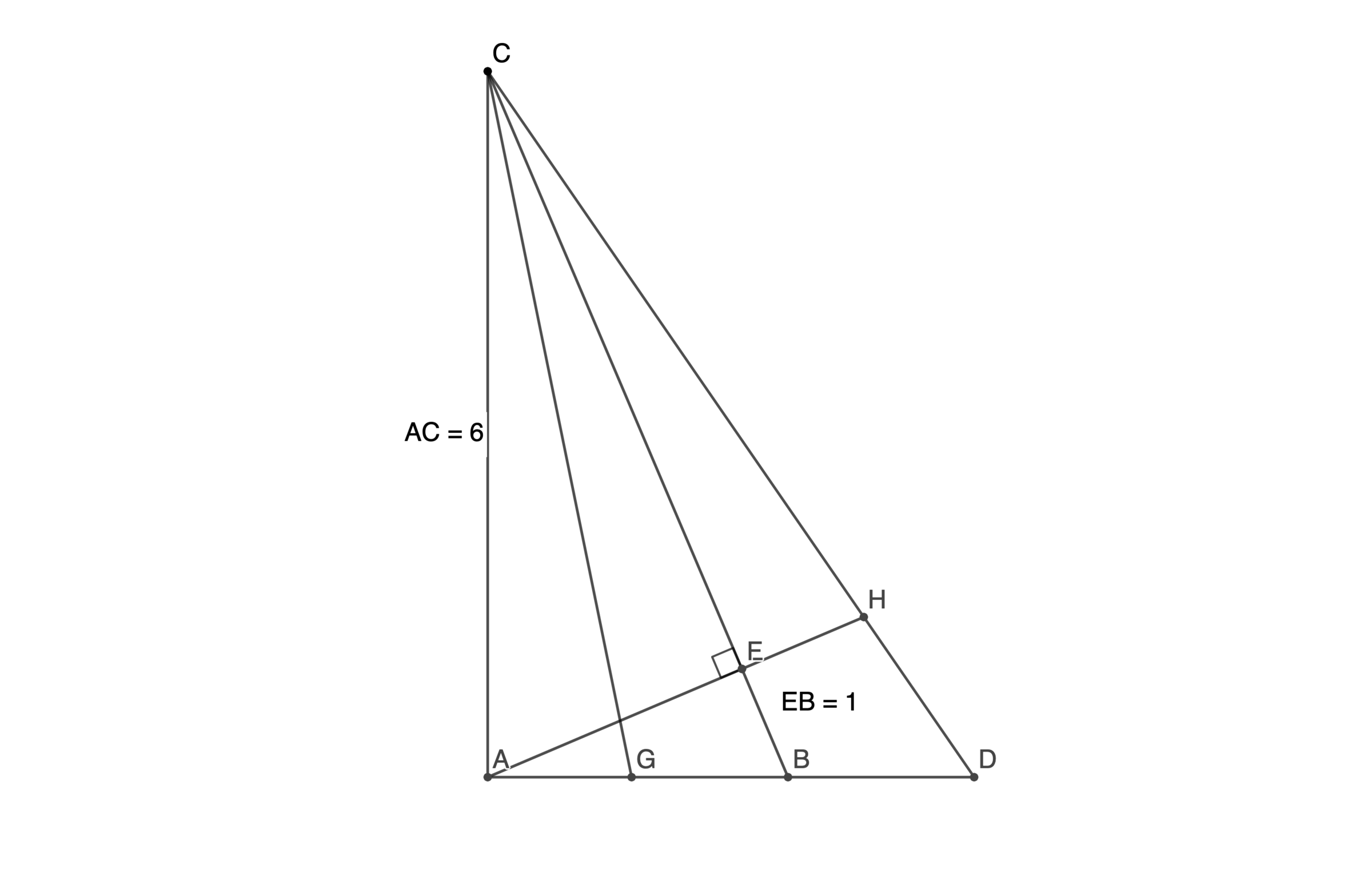Trisect Me

is a right triangle. and are the trisectors of . . and . If the area of is a root of , where gcd , submit .
The answer is 74149.
This section requires Javascript.
You are seeing this because something didn't load right. We suggest you, (a) try
refreshing the page, (b) enabling javascript if it is disabled on your browser and,
finally, (c)
loading the
non-javascript version of this page
. We're sorry about the hassle.
A E is the height to the hypotenuse of right △ A B C , thus, A C 2 = C E ⋅ C B ⇒ 3 6 = C E ⋅ ( C E + 1 ) ⇒ C E 2 + C E − 3 6 = 0 ⇒ C E = 2 − 1 + 1 4 5 By Pythagorean theorem, A B 2 = C B 2 − A C 2 = ( C E + E B ) 2 − A C 2 = ( 2 − 1 + 1 4 5 + 1 ) 2 − 6 2 = 2 1 + 1 4 5 A B = 2 1 + 1 4 5 By angle bisector theorem on A B C , G B A G = C B A C ⇒ G B + A G A G = C B + A C A C ⇒ A B A G = 2 1 + 1 4 5 + 6 2 1 + 1 4 5 ⇒ tan θ = 1 2 + 1 4 5 1 Finally, for the area A of △ A C D we have A = 2 1 A C ⋅ A D = 2 1 A C 2 tan 3 θ = 1 8 1 − 3 tan 2 θ 3 tan θ − tan 3 θ Substituting, we find A = 2 9 2 5 ( 1 4 5 − 9 ) Consequently, A 2 = 8 4 0 5 ( 1 4 5 − 9 ) ⇔ 8 A 2 + 3 6 4 5 = 4 0 5 1 4 5 ⇔ ( 8 A 2 + 3 6 4 5 ) 2 = 23783625 ⇔ 6 4 A 4 + 5 8 3 2 0 A 2 − 1 0 4 9 7 6 0 0 = 0 ⇔ 4 A 4 + 3 6 4 5 A 2 − 6 5 6 1 0 0 = 0 i.e. A is a root of the polynomial f ( x ) = 4 x 4 + 3 6 4 5 x 2 − 6 5 6 1 0 0 .
For the answer, f ( 1 3 ) = 4 × 1 3 4 + 3 6 4 5 × 1 3 2 − 6 5 6 1 0 0 = 7 4 1 4 9 .